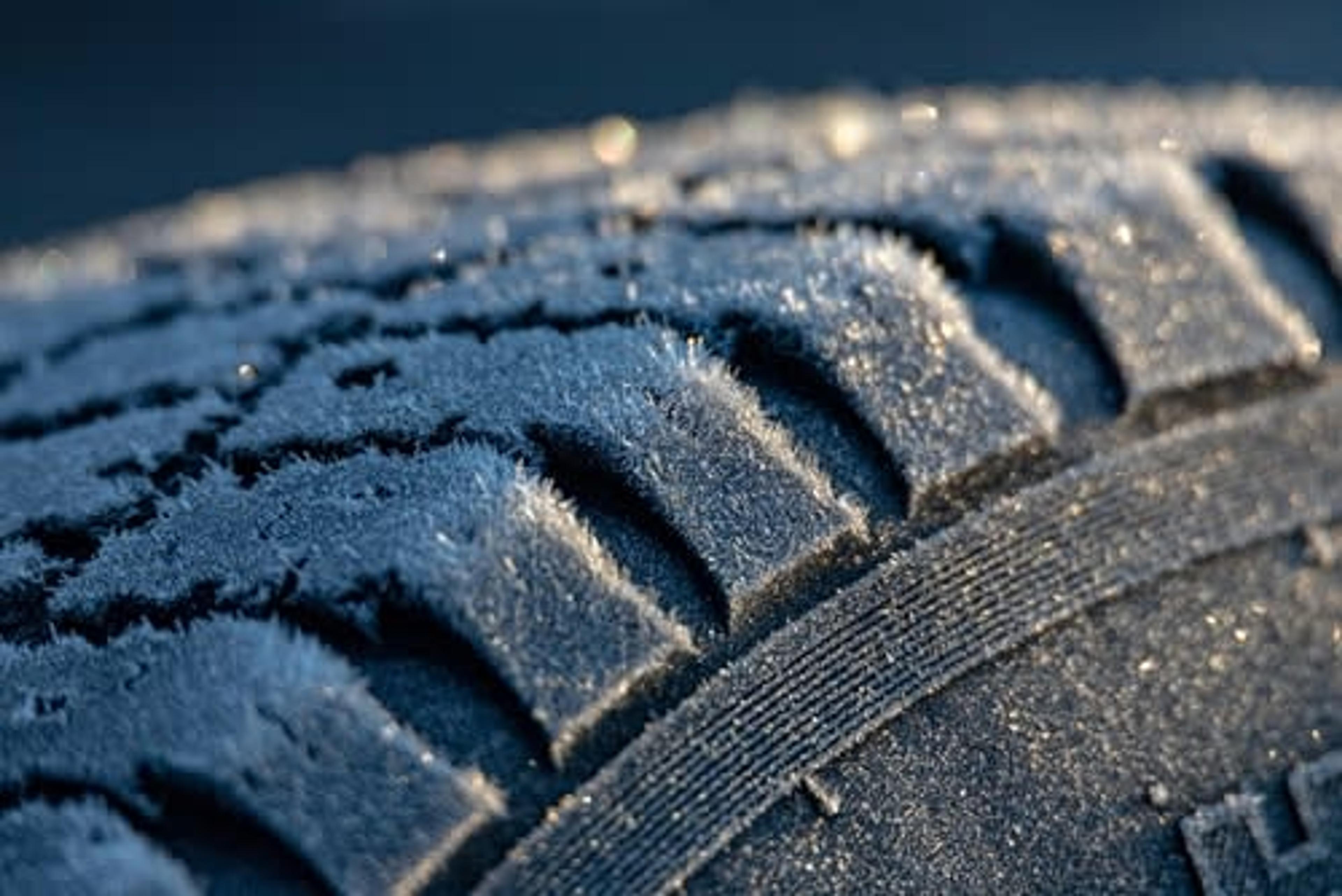Tire Buying Guides
Winter tire buying guide | Do I need winter tires?

Free shipping
Best price guarantee
Special pricing
Financing with Resolve
Easy returns
Tire Buying Guides

Winter driving demands more from your tires than any other season. When temperatures drop and roads become covered with snow and ice, the right tires can mean the difference between arriving safely at your destination and becoming another winter accident statistic.
Many drivers mistakenly believe that all-season tires provide adequate winter protection. However, these tires lose their effectiveness when temperatures fall below 45°F, becoming rigid and unable to maintain proper contact with cold pavement.
Winter tires represent a crucial safety investment for anyone who regularly encounters cold weather, snow, or ice. Understanding their unique features and benefits helps you make an informed decision that protects both your vehicle and your passengers throughout the winter months.
Winter tires fundamentally differ from all-season and summer tires through their specialized construction. The most critical distinction lies in their rubber compound — a unique formulation that remains flexible when temperatures plunge below 45°F. This flexibility allows the tire to conform to road irregularities and maintain crucial contact with the pavement, while all-season tires become hard and lose their ability to grip effectively in cold conditions.
The tread design of winter tires incorporates several key features that work together to provide superior traction. Deep tread depths, typically ranging from 10/32" to 12/32" when new, allow the tire to bite through snow and reach the road surface beneath. Thousands of tiny slits called sipes create additional biting edges that grip ice and packed snow. These sipes work like miniature squeegees, channeling water away from the contact patch to prevent hydroplaning on slushy roads.
Winter tires also feature wider grooves and more aggressive tread blocks compared to their all-season counterparts. These design elements serve multiple purposes: the wide grooves efficiently evacuate snow, slush, and water from beneath the tire, while the sharp-edged tread blocks dig into snow for enhanced traction during acceleration and braking. The directional or asymmetric tread patterns common in winter tires optimize the flow of snow and slush away from the center of the tire, maintaining consistent contact with the road surface.

The three-peak mountain snowflake (3PMSF) symbol assures drivers of a tire’s capability in winter conditions. This certification means the tire has passed stringent tests for snow traction, offering a reliable option for icy roads. Unlike the M+S (Mud and Snow) label, which lacks standardized criteria, the 3PMSF symbol guarantees enhanced performance. Opting for tires with this mark ensures they meet high standards for safety and effectiveness in severe winter weather.
Winter tires need ample tread depth for effective snow and ice navigation. Typically, new winter tires boast a tread depth that allows for optimal grip and stability. When tread wears down to a certain level, performance declines, making timely replacement crucial. Patterns designed to guide slush and water away from the tire are essential for maintaining traction, preventing skids, and ensuring control.
Your choice of tread design should match the specific winter conditions you encounter. Some tires focus on deeper grooves for snow, while others excel at dispersing slush. Selecting a tire with the right combination of features ensures consistent, reliable performance, tailored to the challenges of your environment.
Non-studded winter tires offer a flexible solution for diverse winter driving conditions. Utilizing cutting-edge rubber technology and sophisticated tread patterns, these tires ensure secure traction on icy and snowy roads. Their design minimizes noise on dry surfaces, making them a preferred choice for drivers facing varied winter weather.
Without metal studs, these tires are suitable for all road types without legal constraints. They perform admirably in environments where snow, ice, and clear roads alternate, providing dependable performance across different terrains. Non-studded tires are ideal for drivers who need effective winter capability without the drawbacks of increased noise and road wear associated with studs.
Studded winter tires are crafted for severe winter conditions, featuring metal studs that penetrate icy surfaces for superior grip. These tires are particularly effective in areas with frequent ice but tend to be noisier and might cause pavement damage.
Before choosing studded tires, check local guidelines regarding their permissible use. Some regions regulate their usage to specific seasons or areas. For added flexibility, studdable tires allow customization by adding or removing studs based on weather demands, offering a tailored approach to winter challenges.
Begin by reviewing your vehicle’s specifications for the correct tire dimensions. This ensures optimal handling and performance. Confirm the tire's load capacity and maximum speed rating to match your vehicle's needs for safety and efficiency.
Think about opting for slightly smaller wheels to enhance sidewall protection against winter hazards. Verify that there is sufficient space around brake components and suspension to prevent interference. Keeping the tire diameter consistent is crucial for accurate instrument readings and vehicle operation.
Adapt your tire selection to your driving habits and environment. For frequent highway use, choose tires that handle slush and light snow efficiently, providing a smooth and fuel-efficient drive. In areas with unplowed roads, look for tires with deep, aggressive treads for superior traction.
Select tires with excellent ice grip for regions where icy roads are common. This choice will help maintain control on slick surfaces. For varied weather, opt for tires that offer reliable performance across different conditions, ensuring a safe journey regardless of the weather. Consider your daily routes and the most challenging conditions you might face to make an informed choice.
Maintaining winter tires involves regular checks to ensure performance and longevity. Monitor tire pressure consistently, as temperature drops can affect inflation levels. Keeping tires rotated at recommended intervals ensures even wear, maximizing their lifespan and effectiveness.
Inspect tires for any signs of damage or wear that might have occurred during use. Cleaning them thoroughly before storage helps remove debris and chemicals that could degrade the rubber. Keeping an eye on tread depth throughout the season ensures that your tires remain effective for snowy and icy conditions.
Proper storage of winter tires when not in use is vital for preserving their condition. Begin by ensuring each tire is clean and dry to avoid deterioration from moisture. Store tires in a location that is cool and free from sunlight to protect them from potential damage.
For best results, stack tires horizontally if they are not on rims, or hang them if mounted. Using protective covers can guard against environmental factors. Clearly marking each tire’s position helps maintain its rotation sequence for the next season. Consider utilizing tire storage services at local shops for added convenience.
Winter tire selection doesn't have to be overwhelming when you understand the key features and benefits that matter most for your driving needs. Armed with this knowledge, you can confidently choose tires that will keep you safe throughout the coldest months. Ready to find the perfect winter tires for your vehicle? Shop for tires online and find the best deals with us, where we make the tire buying process simple and affordable.
Search By